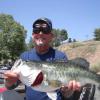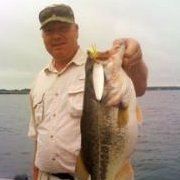Leaderboard
-
in all areas
- All areas
- Images
- Image Comments
- Image Reviews
- Albums
- Album Comments
- Album Reviews
- Topics
- Posts
- Stories
- Story Comments
- Story Reviews
- Classified Ads
- Classified Ad Comments
- Classified Ad Reviews
- Records
- Record Comments
- Record Reviews
- Websites
- Website Comments
- Website Reviews
- Status Updates
- Status Replies
-
Custom Date
-
All time
February 2 2011 - April 25 2024
-
Year
April 25 2023 - April 25 2024
-
Month
March 25 2024 - April 25 2024
-
Week
April 18 2024 - April 25 2024
-
Today
April 25 2024
-
Custom Date
07/15/2017 - 07/15/2017
-
All time
Popular Content
Showing content with the highest reputation on 07/15/2017 in all areas
-
Thanks to all the guys who comment here on a regular basis and helped me in my last two threads. Although the imperfect mold is causing unwanted ribs in my Craws i thought id share just two color ways i've made. Green Pumpkin and my version of June bug, Also just finished up some white with silver flake but will wait for my "The Ripper" Mold to come in to shoot good quality photos.2 points
-
2 points
-
A wider boot and tapering all around the tail section(sides and underbelly) from the body to the boot solved the kick issue for me. And making the tail section between the boot and the body wider helped with making the tail swing side to side only and not doing figure 8s2 points
-
I use an old kitchen knife I found for cutting bait. It's stainless, but the salt water keeps rusting it. I decided to powder coat it, and it turned out pretty good. While I was at it, I took a rusted spoon I had found in the water, cleaned it up and powder coated it white. I wanted a red stripe, but wasn't sure how to make a nice clean one. What I ended up doing was brushing some powder coat onto the glue side of a piece of scotch tape. After baking the white background to set it, I heated the spoon a little more over a heat gun, then laid the tape glue side down on the spoon. It melted right onto the spoon! Nice way to get a clean pattern onto a base coat.1 point
-
Than maybe I'm wrong. Keitech is the first truly round tailed swimbait I've seen that works at all speeds. I've noticed many other bait companies are now imitating them.1 point
-
DaleSW - what you have mentioned is correct, but the boot still creates its own vortices. The idea is to minimize the vortices created at the front end so that you achieve pure waggle. A few years ago, I decided to combine both sets of vortices to try and create a hunting soft plastic swimbait. The idea was to have a bulbous nose to create significant vortices, these would change the direction of the lure on retrieval. The boot would create its own vortices and waggle independent of the nose vortices. The result did not quite achieve what I wanted, but the result is interesting. You can see the evidence of both sets of vortices. It is a strange, non-standard action, but I bet it would still catch fish. I still have the master, but I lost the mold somewhere along my house movings. I didn't have any plastisol, so this was poured with agar agar and glycerine (breaks too easily). Dave1 point
-
No experience per se with the dremel drill press but have modified a few molds with a regular drill press, ball end mills and square end mills. Also use a drill press clamp to hold the mold stationary. This has worked well for me.1 point
-
Both are very possible, and both will be about as hard to prove, or disprove, as the other. Take the measurements and get it to Vodkaman as soon as possible. You already have hardener on the way, and perhaps a stiffer plastic or more tail reinforcement will help. I suspect that one or the other will do the job, but........... there is a 3rd possibility, one I am reluctant to bring up but it could, maybe, hopefully not, be the problem. IF the tail stops moving at a speed slower then Vodkaman predicts based on the Strouhal formula, and IF the tail is not folding back and stiffer plastic or more tail reinforcement doesn't work, then it could actually go back to Strouhal's research. The Strouhal experiments were based on laminar flow, or a smooth flow of fluid (air is considered a fluid at the speeds we are talking about) shedding vortices. If the flow around the lure turns turbulent, then the vorticies become unpredictable and the loss of a smooth flow can/would allow the tail to either stop moving or stop moving predictably. IF this is true, then the problem will be much harder to solve. This is what happened when aircraft started to punch through the 'sound barrier'. For now, let's assume that it is one of the two above, but keep in mind that this could turn into an issue that will be much harder to explain, much harder to solve, simply using the internet. Good luck.1 point
-
1 point
-
1 point
-
Old post I know. A variation on Musky Glenn's, but repeatable. Make a model of the frog and use silicone compound to make a mold. Pour wax into the mold, and dip the wax model in Plastidip. Poke a hole in the frog and drop it in some hot water to melt the wax.1 point
-
Are you sure that it has stopped wagging. As retrieval speed increases, the frequency of the waggle increases. With this increase in waggle speed, the width of the waggle does not have time to achieve the same width at lower speeds. If you only tried low speeds and high speeds, then the lure may still be waggling, but you cannot see it. Try at a low speed were you can definitely see the movement. Count the cranks of the reel per approximate second. Increase the speed on the next retrieve, again counting. Notice the faster and narrower waggle. Write down the numbers. Especially make a note of the numbers when the waggle appears to stop. Back at your workshop, measure the length of line retrieved by one crank of the reel. With this information, all the numbers can be converted to metres per second. I am guessing that around 5m/s (metres per second) the waggle appears to stop. You can send me all the raw data and I will do the sums for you and explain to you why the lure appears to stop waggling. Dave1 point
-
I really don't get too caught up in matching things exactly and find overall color representation more important. White bass/shad/alewife etc... means white to silver color palette. Specific paint colors... I use mainly Createx bud don't pay too much attention to the name . More important is just being able to understand how to lay colors to get the look you are wanting. White bass really have a lot of color variation. You have some that have a lot of green/yellow hue, some very pale, some darker gray, iridescent green over steely gray with deep green stripes, etc... For something like juvenilles I typically spray the body white, Then I will take some light gray and mist the upper back from front to back. Then some metallic gray or silver and hit the back and blend. I will then add a little yellow/green near the heat and lighten up going towards the back. A little gold over spray (very light) near the front. Then with some black highlight the eye socket and to get the stripes. You can go black first then spray a metallic and then build on that also . No really right or wrong way just fire up the brush and remember you can always start over. As mentioned find a picture and just work or replicating what you see.1 point
-
Several things come into consideration. If you look at the clevices, you will notice that they usually tell you the inside diameter or hole size. So in your case on the clevices, they may have an .040 that will fit the .035 wire and an .045 that will fit the .041 wire. Now if the .045 clevice is not too big, then you can use them for both wires. Also what determines what to use, is the bigger the clevice the more room you have for a blade to rotate. You do not want to use a small clevice and then find that the blade binds on the wire as it spins. I would buy several size clevices. They are not that expensive. On the beads, again they need to fit over the wire diameter. You can use plastic beads as spacers and make the spinnerbait lighter, or metal beads which will add weigh to the spinnerbait and you will be able to fish deeper. A lot of this is personal preferance on what you like on a spinnerbait. They also have tubular spacers as well.................Good Luck1 point








